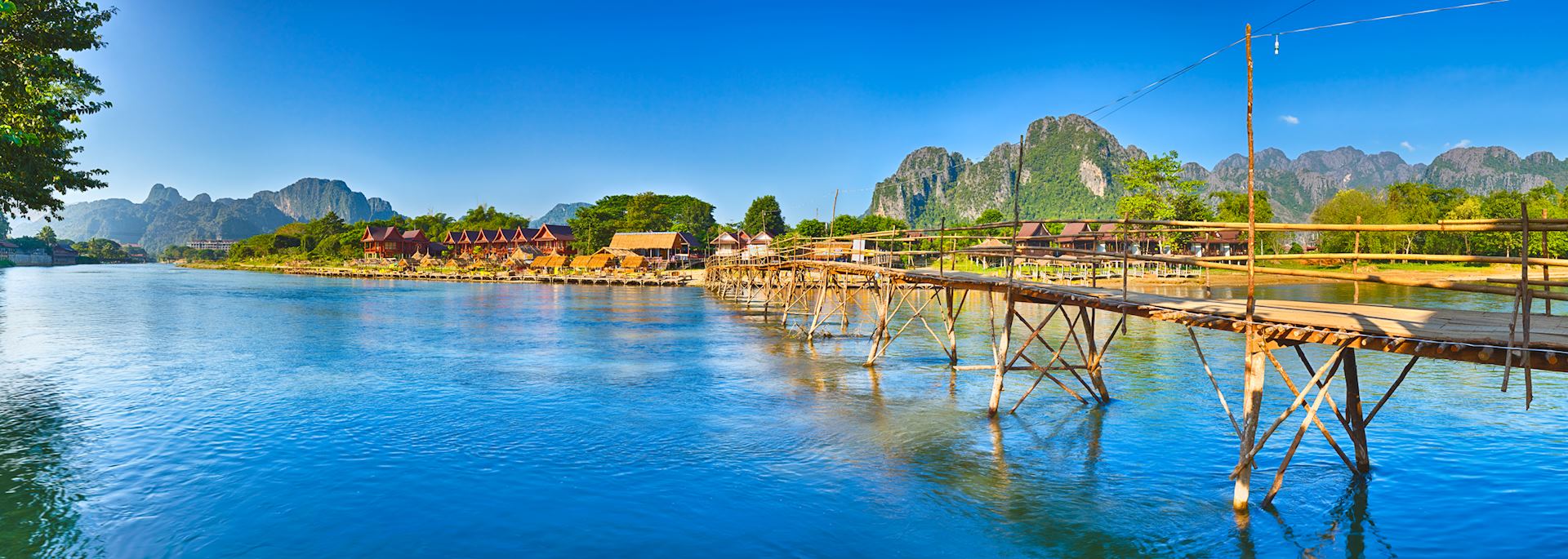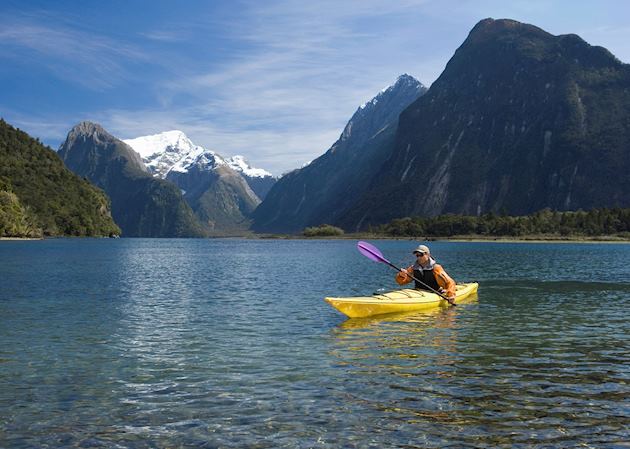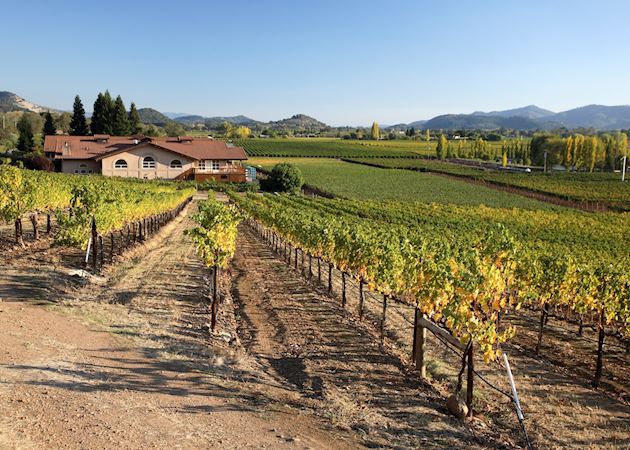With new and improved train routes, hopping between northern Laos’ historical towns and karst-lined countryside has never been simpler — or quicker. Southeast Asia specialist Mary has just returned from a research trip and tells us how these speedy routes allowed her to make the most out of her time there.
Exploring Laos by train
Taking the train on my recent trip to Laos was seamless — and, of course, better for the environment than going by plane or private car, which used to be the only ways of getting around. My journey had all the striking landscapes of a road trip, just in a fraction of the time (and with far fewer bumps). From my seat, I was treated to some of Laos’ very best landscapes: water-soaked rice paddies, wooden-stilted villages, and forest-swathed karst mountains.
You see, Laos has recently seen a dramatic expansion of its railway, which now spans the northern half of the country, from the capital of Vientiane all the way up to the town of Boten, right next to the Laos–China border. I was tasked with testing out this new route, and while I didn’t quite reach the end of the line, I did get to explore Vientiane, Vang Vieng, Luang Prabang, and Muang La along the way. Here’s what I got up to.
Vientiane: an introduction to Laos
There are plenty of international flights into Vientiane, so you’ll likely start your Laos journey here — and I encourage you to spend one or two nights in this laidback capital before darting off to better-known destinations.
I find the best way to take in the city is by tuk-tuk as you can cover more ground than walking and get 360° views, unlike in a car. My guide Souk accompanied me in a mint-green rickshaw while imparting nuggets of information about the country’s history and culture that helped set the foundations for the rest of my trip.
We, of course, saw Vientiane’s more prominent landmarks like Patuxai, the five-towered war monument commemorating those who fought for Laos’ independence from France, and the gilded stupa of Pha That Luang, considered to be Laos’ most important national monument. But Souk also took me to some lesser-known places, like an authentic market where I tried fresh, tangy mangosteen and a handful of crispy, well-seasoned silkworms with few other non-locals in sight. We also visited a family home to watch sticky rice being roasted in bamboo tubes over a fire. A dish, Souk explained, that’s ingrained in Lao culture and enjoyed during every festival.
Our final stop was the COPE (Cooperative Orthotic & Prosthetic Enterprise) Visitor Centre. Inside, there are displays of ‘bombies’ (the Lao nickname for unexploded ordnance) dangling on fine wires from the ceiling. It’s a poignant reference to the lasting effects of the Vietnam War on Laos and its people. I found the visit very sobering but it gave me a much deeper understanding of the country’s history.
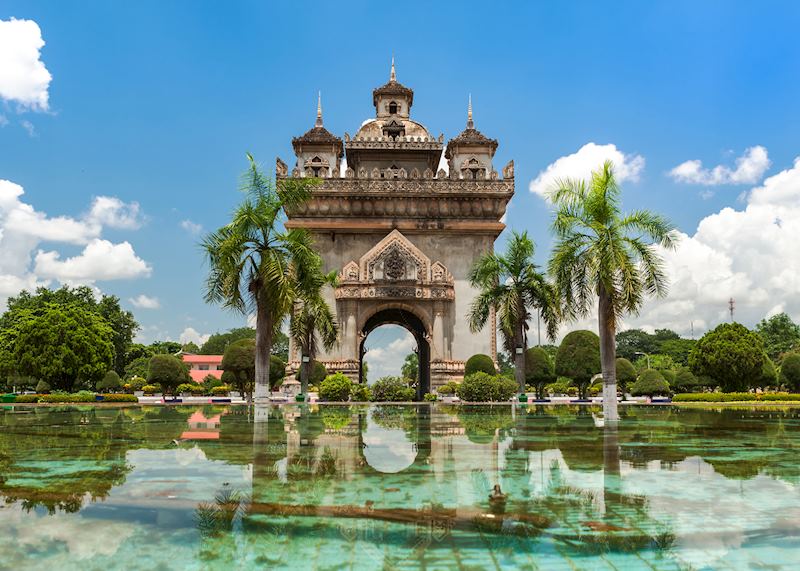
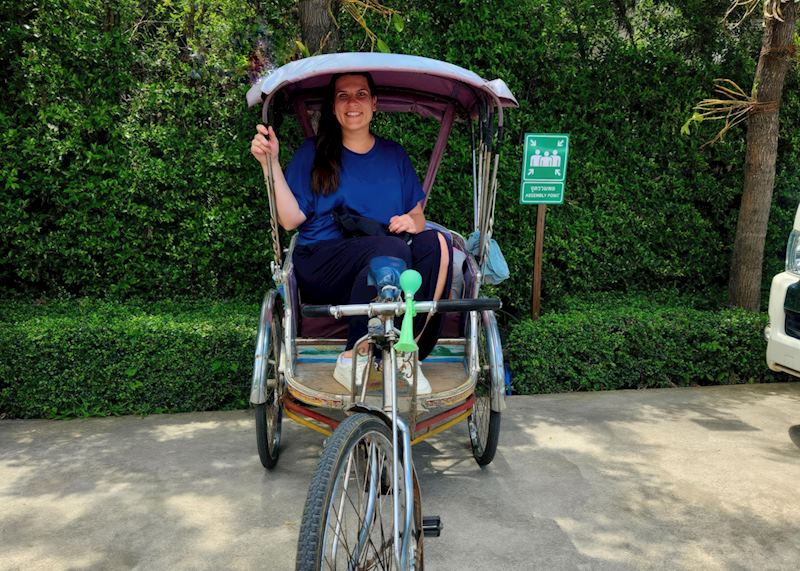
Vang Vieng: outdoor adventures
Souk told me that Vang Vieng is the area of Laos he loves visiting the most thanks to its striking scenery and relaxed atmosphere, so it’s fitting that he was my guide here as well. Vang Vieng is just an hour by train from Vientiane, whereas it takes over two hours by car.
As soon as I arrived, I understood why Souk enthused about this town so much. It’s completely surrounded by lofty karst mountains concealed in moss-like forests, and the placid Nam Song River runs right through it. I particularly enjoyed admiring the peaks at dusk, lounging in my hotel pool, while the sun sank behind the mountains and the sky became washed in deep shades of indigo.
While there, you can also kayak down the river to an organic farm and sip its fresh mulberry tea, cycle over traditional wooden bridges and around ornate 16th-century monasteries, or take a longtail boat cruise to the nearby limestone caves filled with jagged stalagmites and stalactites — and a colony of resident bats.
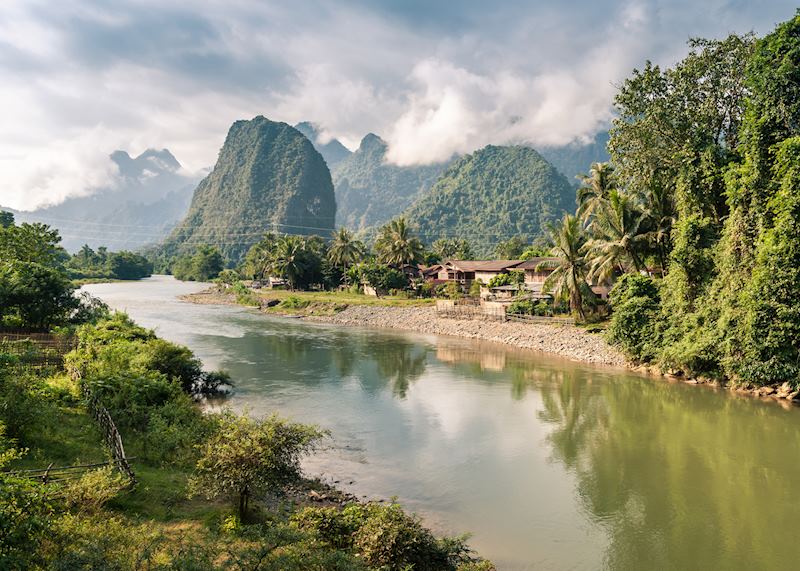

Luang Prabang: culture & cuisine
After soaking in the verdant craggy scenery of Vang Vieng, I hopped on another hour-long train to the UNESCO World Heritage town of Luang Prabang, which is again much faster than the four-hour drive it used to take before the train lines were established. Here, the well-preserved French-colonial architecture reveals the layers of Laos’ history, and there are plenty of opportunities to immerse yourself in the local culture, too.
In addition to a guided city tour, I recommend attending the daily alms giving where the townspeople donate food to monks as they pass by. This can get quite busy, but thankfully, my guide Dee took me away from the main streets. Together, we perched on wooden stools and watched the lines of saffron-robed monks edge closer, their baskets slowly filling up with rice. It was a very peaceful experience, and I’m thankful that Dee was there to teach me how to take part respectfully, lowering our eyes as the monks walked by.
On the topic of food, there were abundant culinary delights in Luang Prabang, but my most-cherished memory is the farm-to-table cooking experience I had at a community-driven farm just outside of town. As I wandered around with my instructor and learned about permaculture practices, we collected fresh seasonal vegetables and herbs for dinner.
Then it was time to get stuck in and prepare our meal — and what a feast it was. I’m not one for too much spice, so my instructor helped me tone down the heat and create wonderfully fragrant red curry, purple sticky rice with sweet mango, and larb, a minced pork salad with fresh mint and lime juice that’s considered to be Laos’ national dish. It was unlike anything I’ve tasted back home.
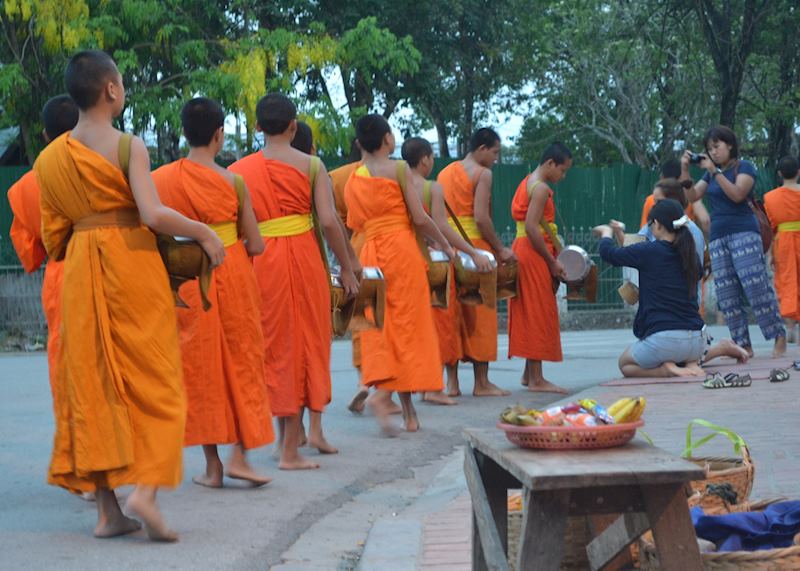
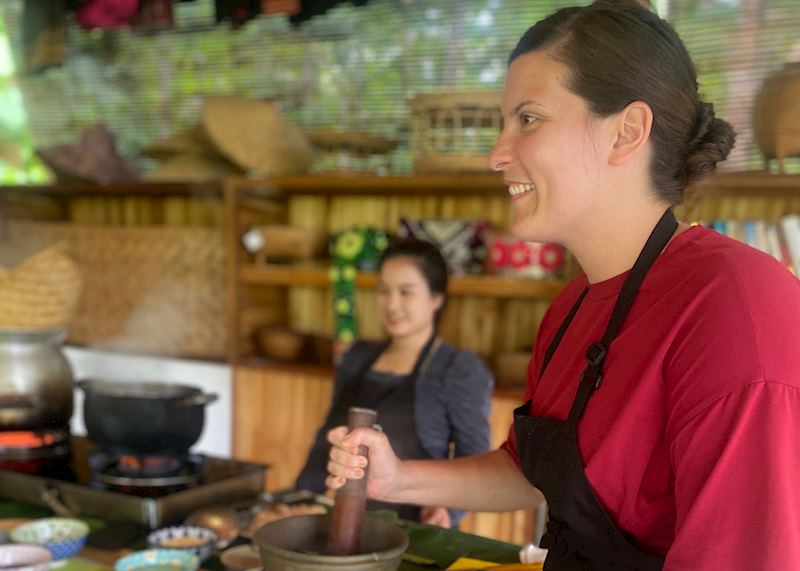
Muang La: life in the hills
My final stop was Muang La. It took about an hour on the train to reach the station in Oudomxay and then my driver picked me up to head deeper into the countryside toward the remote Nam Kay Yorla Pa Resort, my riverside retreat for the next couple of days.
One of the main draws of visiting Muang La is meeting the Hmong and Akha people who live in the nearby hills. During my visit, Dee returned as my guide, and he was the ideal person for this trip. A member of the Hmong people himself, Dee grew up in a village similar to the one we visited, so there was an instant connection as soon as we arrived. A local weaver even invited us into his home to meet his family.
The Hmong people came over to Laos from China in the 18th century, and now there are almost 600,000 in the country. As we walked around and met the villagers, Dee told me that they’re traditionally animist, believing in the spirit world and the interconnectedness of all living beings. He pointed out that each thatched-roof house has two doors — one for public use, the other for spirits.
Then, we drove further up into the hills, where we visited an Akha village. Also animists, the Akha community there had erected small wooden spirit gates at the entrance and exit of the village to protect their land.
For me, the best part was when Dee took us to a viewpoint further up the hill so we could take in the village from above. Surrounded by hills blanketed in Laos’ characteristic lush greenery, we could see the clusters of maroon and baby-blue tin-roofed houses poking out of the undergrowth and children playing soccer below. That serene snapshot of life in the hills has stayed with me ever since.
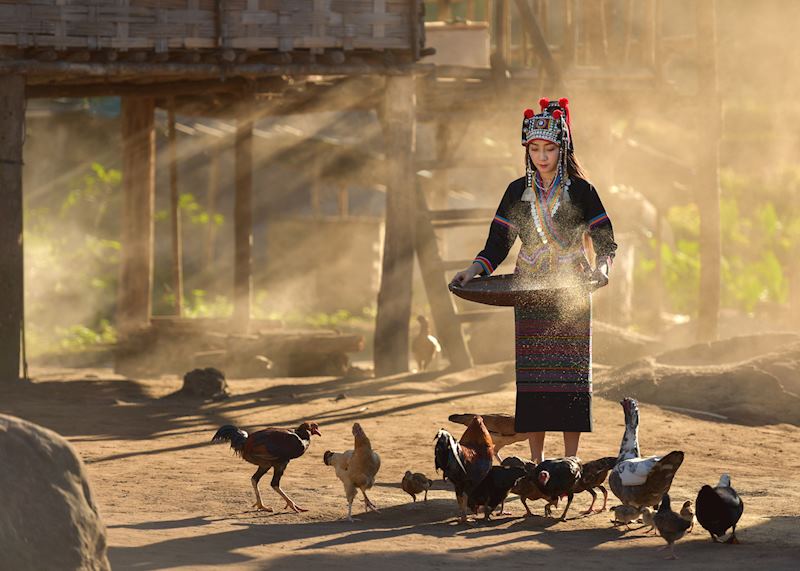
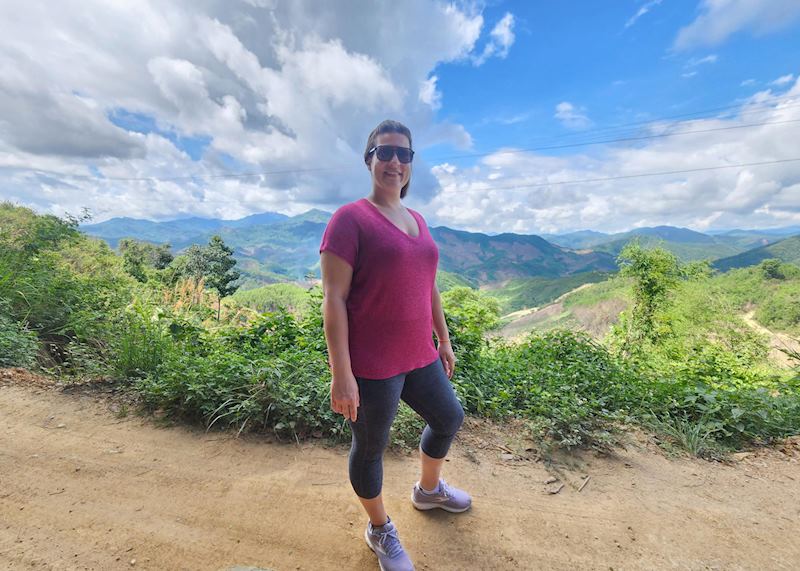
Planning your visit to Laos
I focused my route along the train line, but the south of the country is well worth a visit, too. Sadly, there aren’t any rail networks there yet, so I suggest a short flight from either Luang Prabang or Vientiane to the city of Pakse. From there, you can visit the UNESCO World Heritage Site of Wat Phou, a ruined Khmer temple that clings to the edge of mountain foothills, as well as the riverine archipelago of Si Phan Don, which translates to 4,000 islands, an apt name for the hundreds upon hundreds of tiny islands and rock formations that protrude from the Mekong River.
Get me there: Spend 13 days exploring the classic sites of Laos
Was this useful?

